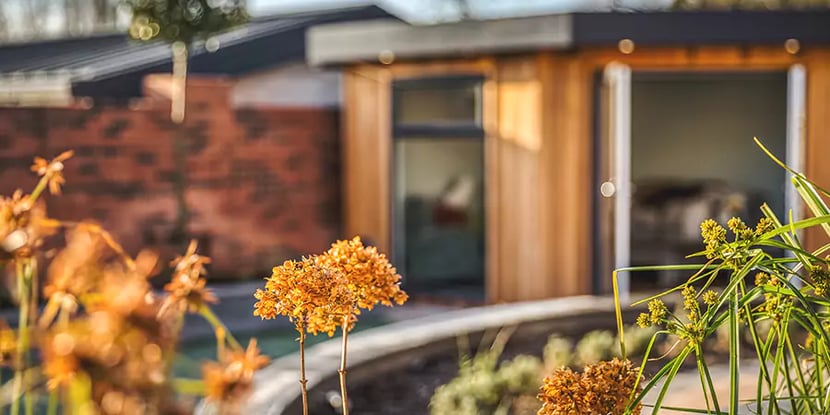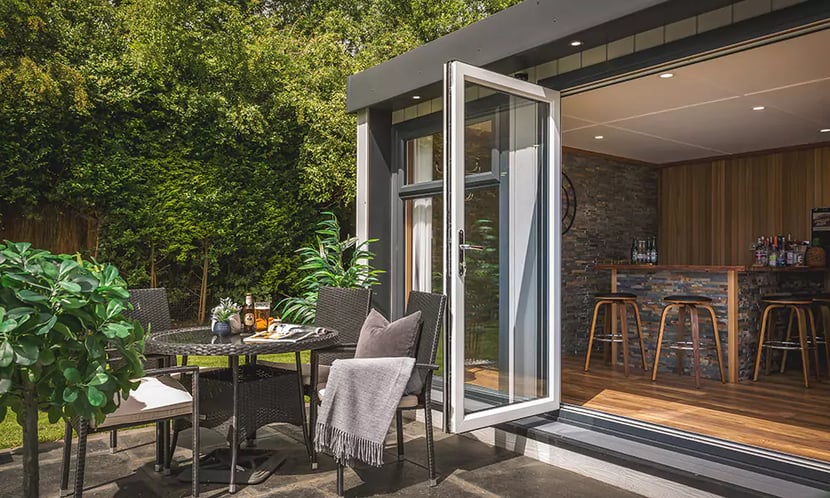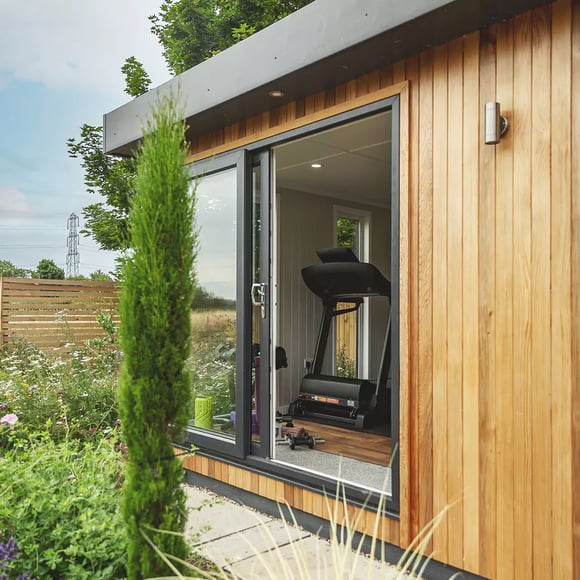
How To Extend Wi-Fi to Your Garden Office or Shed
We're seeing a massive trend of more and more households installing offices in their gardens. And why not?
Garden offices are the perfect way to get some peace away from the main house, while still being close enough to keep an eye on things.
Believe it or not, one of the most common problems people face with garden offices is the ability to get a decent Wi-Fi signal. Read on to find out our thoughts on the best wifi extender for garden...
If you're working from home, you need wifi for garden. The last thing you want is to be constantly losing your internet connection. In fact, in this day and age, this is often the deciding factor on whether people can work from home at all. So.. you may be wondering how to get wifi for the garden.
There are a few things you can do to try and extend your Wi-Fi signal to your garden office, and we've listed them below:
(Also, before we get into the weeds, we'll list the options by the ease of installation).
Wi-Fi Extender
By far the easiest way to get Wi-Fi in your garden office is by using a range extender or repeater - these work by amplifying the signal it receives from the router and is then bounced to your devices in your garden office.
One thing to keep in mind with range extenders is that they will halve your bandwidth - ie. if you have a 100mbps connection, an extender will give you 50mbps in your garden office.
Now, as technology advances, they will get better over time, however, for now, it’s still something to keep in mind…
Depending on the thickness of the walls in your house, you've probably used or, at least seen a range extender before - these are often used in large homes to extend the reach of a Wi-Fi signal.
The benefit of using extenders is that they are incredibly easy to set up and usually don't require any wiring. You can just plug it into an outlet and it starts working right away. All you need to do is pair them with your router and you're good to go.
Pros
- Cheap way to boost your signal.
- Relatively easy to install.
- Works with a traditional/regular router.
- Doesn't require any wiring.
- Eliminates dead zones.
- Can have several in one room.
Cons
- Reduces your bandwidth by half.
- May not work well with brick walls or other thick barriers.
- Inconsistent speeds.
- Different brands have different strengths and weaknesses.
Price range: £15 upwards
Wi-Fi PtP (Point-to-Point)
The odds are, you've probably never heard of Wi-Fi Point-to-Point (PtP). The technology has been around for a while but only recently has it become popular.
PtP is very similar to using an extender except, instead of plugging it into an outlet, you hardwire it to your router with an Ethernet cable. It requires two units; one to connect to your router and another to sit outside in your garden office.
The benefit of using PtP is that you won't lose any bandwidth in the same way you would with an extender - a 100mbps connection via PtP, you'll still get 100mbps in your garden office.
Another benefit is that it's more reliable than an extender, ie. you shouldn't get any dropouts or inconsistencies in speed.
The downside of PtP is that it's more expensive than an extender and it does require some wiring. If you're not comfortable with running a cable through your house, this might not be the option for you.
Your home network unit is attached to your house and the second device is in the garden building - this solution provides the strongest signal when there is a clear line of sight between both units, but trees or other buildings can get in the way and interfere with it.
The range is also much larger with PtP than with an extender, so if you have a large garden or property, this is definitely worth considering…
Pros
- No bandwidth loss.
- More reliable than an extender.
- Much larger range.
Cons
- More expensive than an extender.
- Requires some wiring.
Price range: £55+
Ethernet Cable
Fast establishing itself as one of the more popular ways to extend your Wi-Fi signal is the Ethernet cable, which can be run from your router out to your garden office.
This is by far the most reliable way to extend your Wi-Fi signal - you won't lose much speed and you'll always have a consistent connection.
The only downside is that it requires some wiring and it is not something to be attempted without the help of a professional and may bump up the cost of installation.
Note: If you have a power cable installed for your garden office, you may be able to get an Ethernet cable installed at the same time; this would make running the wiring much easier + save you a bit of cash.
Pros
- The most reliable way to extend your Wi-Fi signal.
- Won't lose as much speed.
Cons
- Requires wiring.
- May need professional help to install.
Price range: £15 upwards
Powerline Networking
There aren't many people who know that you can use your home's electrical wiring to extend your Wi-Fi signal - it's a technology called powerline networking and it's becoming increasingly popular.
The way powerline networking works is by plugging two adapters into your sockets: One plugs into your router and the other plugs into the socket in your garden office or shed.
These adapters then, very cleverly, use your electrical wiring to create a network and extend your Wi-Fi signal.
Note: No ifs, ands, or buts - this is definitely one for the professionals!
Pros
- Uses your existing electrical wiring.
- An ingenious way to extend your Wi-Fi signal.
- Can be installed at the time of construction.
Cons
- You will need to hire a professional to install it.
- To use electricity in your garden building, it must be wired to the same distribution box as your home or other buildings.
Price range: £30 upwards
SpaceX Starlink
Now, if you already had this one on your list, we’d be extremely impressed… This is not something widely available to the general public yet, but it will be - and soon.
SpaceX Starlink is a new satellite-based internet service that is being developed by SpaceX - it provides high-speed internet to anywhere in the world, even in the remotest of locations.
The thing about SpaceX Starlink is that it’s only currently available in a few select regions within the UK. However, if you're patient, you won't even need to extend your Wi-Fi signal - once SpaceX Starlink is rolled out fully, you will be able to access the internet anytime, anywhere.
Of course, the downside is that it's going to be expensive. But, if you need high-speed internet in a remote location, it will absolutely be worth your investment.
Note: This is more of an option for those who spend most of their time in their garden office and have no desire to start digging trenches or running cables. It won't be the popular choice, but we thought we would still mention it as a viable option.
Pros
- Will be available soon.
- No need to extend your Wi-Fi signal.
- Will provide high-speed internet to anywhere in the world.
Cons
- Very expensive.
Price range: from £89 per month and £529 for the kit (dish, router, etc.)
We hope this has provided you with the information you need to answer the question of how to get wifi outside your house. Have you found other ways to extend your Wi-Fi signal to your garden office or shed? Got thoughts about the best wifi extender for garden?
We would love to hear about them in the comments below. In the meantime you can get an idea of finishes by taking a look at the some of the already completed garden rooms on our website at www.cabinmaster.co.uk. For additional inspiration take a look at our downloadable free e-book The Ultimate Guide to Garden Rooms.





.webp?width=830&height=415&name=cabin-master-docrat-redwood-hybrid-5mx3m-3-feature-657c60d65197b%20(1).webp)







_compressed%20(1).webp?width=830&height=553&name=Cabin_20Master_Cedar_ONions_Office_23a_20(1)_compressed%20(1).webp)


